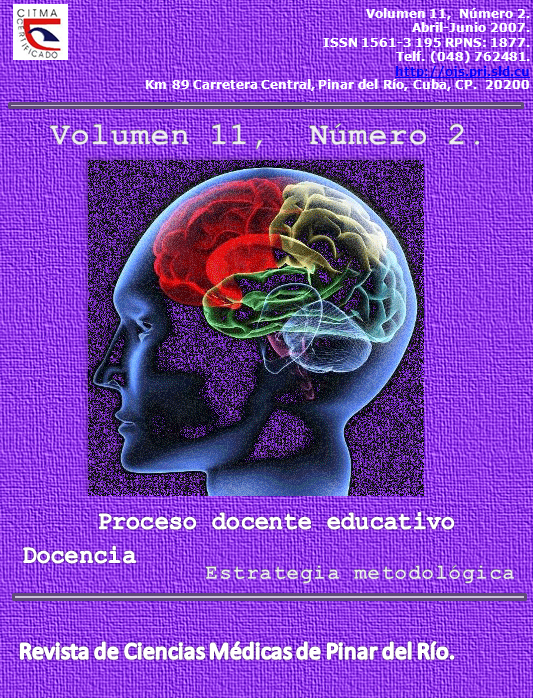El tutor como amigo y guía del educando. The tutor as a friend and guide of the student
Abstract
La universalización de la educación superior es un proceso continuo de transformaciones, iniciado con el triunfo de la Revolución en el año 1959, y dirigido a la ampliación de posibilidades y oportunidades de acceso a la universidad y de multiplicación y extensión de los conocimientos, con lo cual se contribuye a la formación de una mayor cultura general integral de la población y a un incremento sostenido de equidad y justicia social en nuestra sociedad, se realizó un estudio analítico cualitativo con el objetivo de conocer el trabajo del tutor en el proyecto policlínico universitario en San Luis año 2006/2007, utilizando como muestra el claustro profesoral y los estudiantes pertenecientes a la SUM, obteniendo como resultado que existen deficiencias en el modo de actuación del tutor en las áreas estudiadas que van desde los criterios de selección al no existir un modelo; la falta de conocimientos acerca de las funciones del tutor sumado a la falta de reconocimiento de su labor, lo que aparece reflejado en los estudiantes de pregrado y postrado.
Palabras clave: MODELO PEDAGÓGICO, UNIVERSIDADES/Cuba, EDUCACIÓN OSUPERIOR, EVALUACIÓN EDUCACIONAL, TUTORÍA/métodos.
ABSTRACT
The universalization of High Medical Education is a continuing process of transformation that started with the triumph of the Revolution in 1959 aimed at extending the possibilities and opportunities of enrolment at universities as well as the spread of knowledge, favoring a high level of culture in the population and an increase of equity and social justice in our Society. An analytical qualitative study was carried out in order to know the role of the tutor at the University Out-patient Project in San Luis Municipality in 2006-2007, taking the teaching staff and the students enrolled at this University Venue as a sample. Some deficiencies were observed in the role of tutor on the areas studied : from the choice criteria due to the non-existence of a model to follow, lack of knowledge and recognition of the tutor's role, being these difficulties reflected on undergraduate and postgraduate students.
Key words: PEDAGOGICAL MODEL, UNIVERSITIES/Cuba, HIGHER EDUCATION, PRECEPTORSHIP/methods.
Downloads
How to Cite
Issue
Section
License
Authors who have publications with this journal agree to the following terms: Authors will retain their copyrights and grant the journal the right of first publication of their work, which will be publication of their work, which will be simultaneously subject to the Creative Commons Attribution License (CC-BY-NC 4.0) that allows third parties to share the work as long as its author and first publication in this journal are indicated.
Authors may adopt other non-exclusive license agreements for distribution of the published version of the work (e.g.: deposit it in an institutional telematic archive or publish it in a volume). Likewise, and according to the recommendations of the Medical Sciences Editorial (ECIMED), authors must declare in each article their contribution according to the CRediT taxonomy (contributor roles). This taxonomy includes 14 roles, which can be used to represent the tasks typically performed by contributors in scientific academic production. It should be consulted in monograph) whenever initial publication in this journal is indicated. Authors are allowed and encouraged to disseminate their work through the Internet (e.g., in institutional telematic archives or on their web page) before and during the submission process, which may produce interesting exchanges and increase citations of the published work. (See The effect of open access). https://casrai.org/credit/



